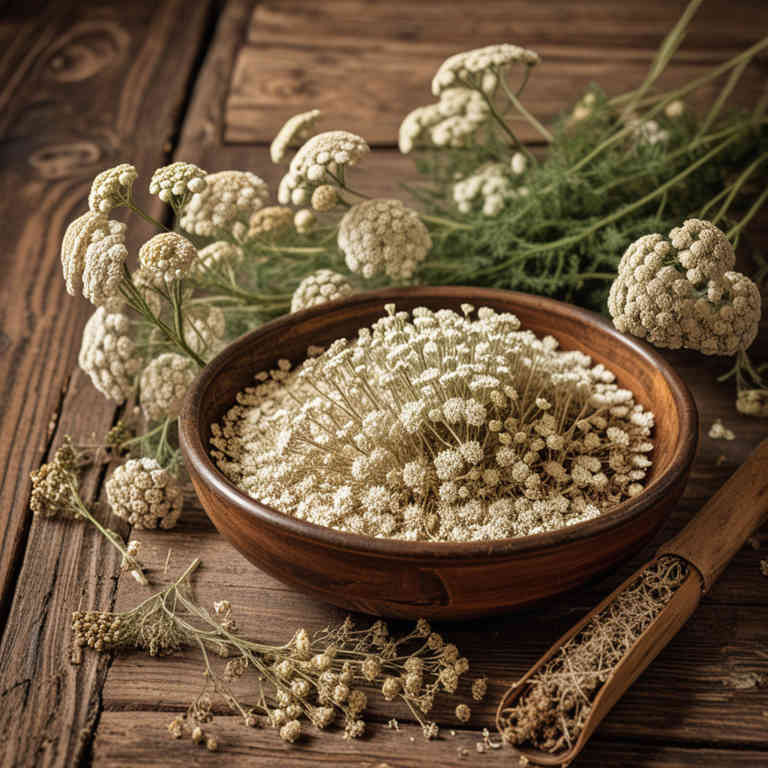Achillea millefolium decoction for medicinal use

Achillea millefolium decoction is a preparation made by boiling the dried leaves and flowers of the yarrow plant.
It is commonly used in herbalism for its anti-inflammatory, astringent, and hemostatic properties. This decoction is often employed to treat wounds, reduce bleeding, and alleviate symptoms of colds and fevers. It may also support digestive health and help manage menstrual discomfort.
In traditional medicine, it has been valued for its ability to promote healing and balance bodily functions.
Uses
Achillea millefolium decoction has been used to treat a variety of ailments across different cultures and time periods.
Historically, it was revered by ancient Greeks and Romans for its wound-healing properties, believed to promote rapid recovery from injuries. In traditional medicine systems, such as Ayurveda and Chinese medicine, it has been utilized for its anti-inflammatory and antispasmodic effects. Modern research suggests that the decoction may have applications in treating digestive issues and menstrual disorders due to its active compounds.
Today, it is still used in herbal medicine for its potential therapeutic benefits, though more scientific studies are needed to fully validate its efficacy.
Benefits
Achillea millefolium decoction has health benefits such as reducing inflammation, supporting digestive health, and promoting wound healing.
It is traditionally used to treat ailments like stomach ulcers and menstrual cramps due to its antimicrobial and anti-inflammatory properties. The decoction may also help in managing stress and improving skin health because of its high content of flavonoids and other antioxidants. It is often used in herbal medicine for its ability to support the circulatory system and reduce fever.
However, it should be used with caution and under the guidance of a healthcare professional to avoid potential side effects.
Constituents
Achillea millefolium decoction active constituents include sesquiterpene lactones, flavonoids, phenolic acids, and volatile oils.
These compounds are responsible for the plant's anti-inflammatory, antimicrobial, and antioxidant properties. Sesquiterpene lactones are known to support wound healing and reduce inflammation. Flavonoids contribute to the decoction's ability to strengthen blood vessels and improve circulation.
Phenolic acids and volatile oils further enhance its efficacy in treating digestive and skin-related conditions.
Preparation
To make Achillea millefolium decoction, begin by gathering fresh or dried yarrow herb, ensuring it is clean and free from contaminants.
Place about 1 tablespoon of the herb into a pot and add 1 cup of water. Bring the mixture to a boil, then reduce the heat and let it simmer for 10 to 15 minutes. Strain the liquid through a fine mesh strainer or cheesecloth to remove the plant material.
Allow the decoction to cool slightly before consuming, typically 1 to 3 times daily as needed.
Side Effects
Achillea millefolium decoction may lead to gastrointestinal discomfort, including nausea, vomiting, and diarrhea, particularly when consumed in high doses or on an empty stomach.
It can also cause skin irritation or allergic reactions in individuals sensitive to plants in the Asteraceae family, such as ragweed. Long-term use may interfere with liver function, as some studies suggest potential hepatotoxic effects. Additionally, it may interact with certain medications, particularly those affecting blood clotting or the liver.
Due to these possible side effects, it is advisable to consult a healthcare professional before using this preparation, especially for prolonged periods or in combination with other treatments.